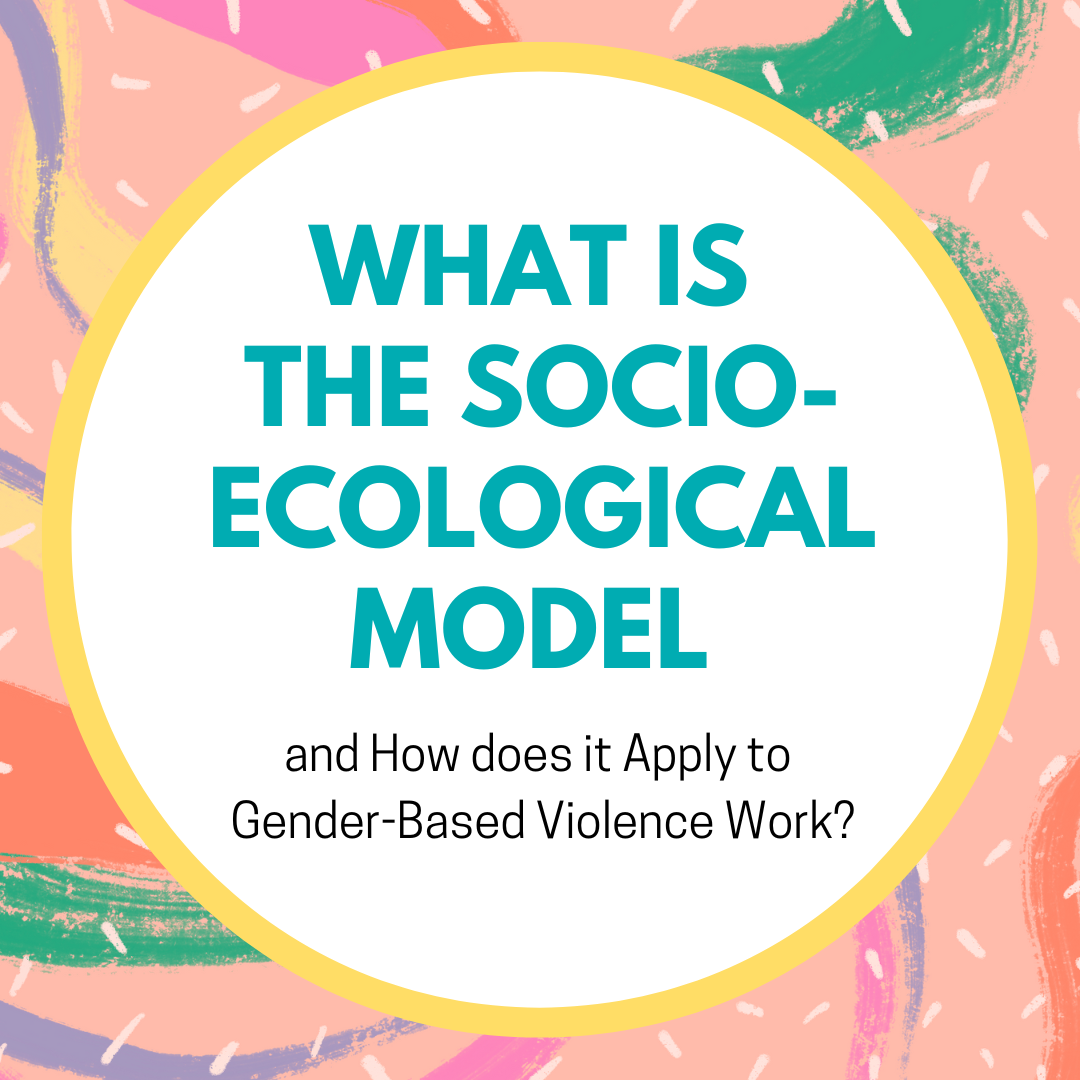What is the Socio-Ecological Model and How does it Apply to Gender-Based Violence Work?
Both the Courage to Act Report and our Education and Training Toolkit are grounded in a framework called the socio-ecological model. This model recognizes that our actions as individuals are deeply rooted in the social world around us; and for lasting change to happen, this change needs to take place in all levels of our social world. It understands gender-based violence (GBV) as a widespread and complex problem that needs diverse approaches to prevention education, in order to be addressed over the long term. The socio-ecological model highlights the power of acknowledging the structural, societal, community, relational, and individual impacts of GBV.
P. 15, Education and Training Toolkit
Courage to Act adapted this model from Erin Casey and Taryn Lindhorst’s article on a multi-level, ecological approach to the primary prevention of sexual assault and the research of Kenneth McLeory, Daniel Bineau and Karen Glanz on ecological perspective on health promotion programs. We wanted to further strengthen the scope of the socio-ecological model by including “historical” as an additional layer. This gives us an opportunity to acknowledge and integrate the historical and ongoing violence that allows GBV to continue in our society, in our communities and on individual levels. Adding this layer ensures the historical impacts of present-day GBV are critically embedded within our prevention and intervention approaches. We cannot risk speaking about present-day GBV as being somehow disconnected from the past.
P. 17, Education and Training Toolkit
The work to address and prevent GBV is work against long-lasting legacies of oppression. When we look, for instance, at the interrelation of GBV and violence against Indigenous women, non-binary, two-spirit and trans communities; defining this violence solely as “historical” would ignore how these abuses and injustices are ongoing, and are inherently linked to current systems of power and privilege. However, there is power in acknowledging the historical, structural, societal, community, relationship and individual impacts of such violence-- none of which lives in a vacuum.
The socio-ecological model seeks to prevent GBV by clearly defining it, identifying risks and protective factors, developing and assessing prevention strategies, and supporting the widespread adoption of strategies that have proven to be effective. Post-secondary institutions can use this approach to strengthen their efforts to address and prevent GBV, by looking at how their work intersects with each level of the model. They can explore how they are addressing learning and community needs from the individual, relationship, community, societal, structural and historical levels.
Attitudes, beliefs and behaviors that allow GBV to persist don’t just exist within individuals. They are supported by broader social environments, social structures, history and its current-day influence, and peer networks. The socio-ecological model understands that the responsibility to end GBV shifts from survivors to those who have caused harm, and importantly to the community and society as a whole.
Gender-based violence is preventable, and everyone has a role to play in preventing it.
__________
This blog includes excerpts from Chapter 1 of the Education and Training Tool by Dr. CJ Rowe and Jennifer Flood.
__________
Suggested Reference: Courage to Act. (2022, November). What is the Socio-Ecological Model and How does it Apply to Gender-Based Violence Work? Courage to Act. www.couragetoact.ca/blog/socioecological-model.




